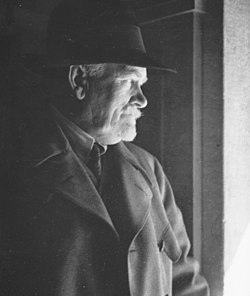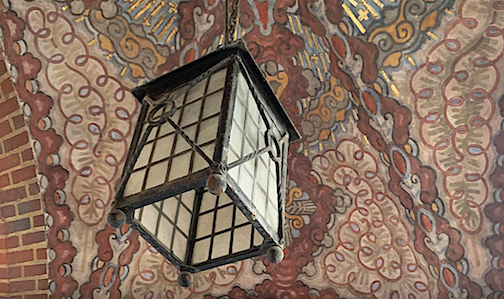Fresco is a distinctive mural painting technique carried out on a layer of plaster, known as intonaco, while it is still fresh and damp. The term derives from the Italian word affresco, meaning "in the fresh." The plaster layer typically measures about 5 mm in thickness.
The process begins with sketching the desired design. The artist then applies the intonaco—a plaster made from slaked lime—onto a dry yet thoroughly moistened underlayer called arriccio, which consists of completely carbonated lime. The intonaco is smoothed using a trowel, often a thin, elongated type known as a "cat's tongue."
The artist must prepare just enough plaster to cover the surface they can paint in a single day, known as a giornata. This daily section usually ranges from 1 to 4 m². Painting must occur while the plaster remains wet, as this allows the pigments to bond with the surface.
Natural pigments, such as metal oxides or earth-based materials, are used for painting. These pigments are prepared by grinding crystals and mixing them with lime water—a byproduct of rested lime. This mixture ensures vibrant and durable colors.
Work typically starts from the top-right corner of the surface to prevent drips or splashes from damaging completed sections. For larger walls, close collaboration between masons and painters is essential, though they work on separate portions of the wall.
Due to the technique's constraints, large-scale frescoes are challenging and require swift, precise execution. Any errors are often irreparable, making the painter’s skill and confidence crucial.
The frescoes of the Sofia Church in Paris (choir, side vaults, vestibule, and hall) stand out for their geometric motifs, designed to evoke a festive and joyous vision of heaven, as is common in Christian architecture. Notably, the monumental Christ in the choir offers an extraordinary optical illusion, masterfully executed by the artist.

Carl Filip Månsson, born on March 5, 1864 in the parish of Våmb in Skaraborg County, died on March 30, 1933 in Saltsjöbaden in Stockholm County, was a Swedish decorator, engraver, and artist. He was a professor at the Stockholm Technical School, master painter, decorator, and governor of the Pax Aurea order founded by Evert Taube.
He revived old traditions in his field and created new means of expression. By using old methods in the craft of plaster painting and also treating wood materials, he created his personal style. His decorations are very individual with elements of oriental arabesques that cover large areas in a stylized design.
The wall decoration of the Sofia church was entrusted to Carl Filip Manson and two of his art disciples.
When he worked on the Swedish church in Paris, he was already at the height of his art and the treatment of the ribbed ceilings of the gallery along rue Mérédic is an enchantment that reveals his taste for ochres, raw siennas, iron oxides which go so well with lime paint that he treats "al secco".



